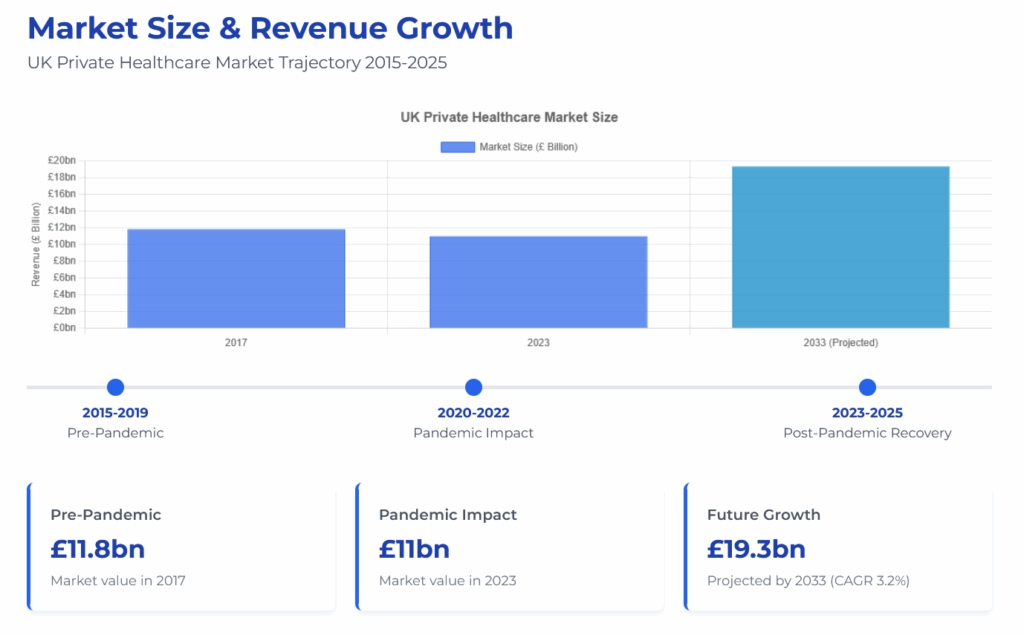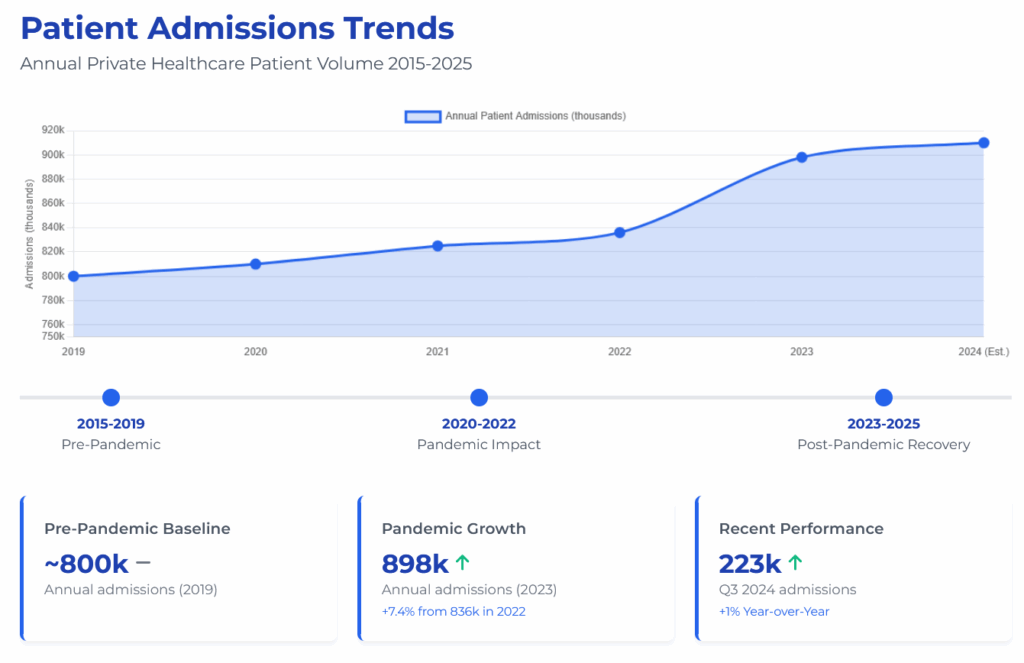In recent years, the UK’s National Health Service (NHS) has faced mounting pressures. As of the end of November 2024, the NHS waiting list in England stood at 7.48 million, with an estimated 6.28 million people waiting for care, says BBC news reports.
As a result of these challenges, many patients have been led to seek private healthcare options.
In Scotland, the number of privately-funded operations surged by 80% over five years, with one-third of all hip and knee replacements in 2023 being self-funded. The rise in private GP surgeries, from three in 2019 to 11 in 2024, highlights the struggle to access NHS services. Public Health Scotland data indicates that patients paying for their hospital treatments rose from 12 000 in 2019 to 22 000, in 2024.

Patients opting for private GP services often cite the benefits of reduced waiting times and personalised care. One patient shared, “I was able to see a GP within 24 hours, something that would have taken weeks with the NHS.” Such experiences underscore the appeal of private services amidst NHS delays.
A Significant Transformation in Healthcare Underway
The landscape of healthcare in Great Britain is undergoing a significant transformation. Studies show that the rise of private GP services is not merely a passing phase, but a response to systemic challenges within the public healthcare system.
One of the primary catalysts for the surge in private GP consultations in Great Britain is the increasingly long waiting times within the NHS. In January 2023, approximately 1.6 million GP appointments in England were scheduled more than 28 days after the initial booking, according to figures from NHS Digital.
These kinds of delays are not just inconvenient. They can also lead to a deterioration in patients’ health, which is why many are turning to private healthcare providers to receive timely medical attention.
The public’s growing frustration with long waits has been one of the most powerful motivators behind the shift.
Adding to the crisis is the immense strain on NHS resources. The NHS currently has a record 7.75 million people on hospital waiting lists, a situation worsened by a national shortage of full-time GPs.
Many doctors are retiring early or reducing hours due to burnout, further limiting access to care. With fewer available practitioners and rising demand, it’s become increasingly difficult for patients to secure prompt appointments, especially for non-urgent but necessary issues. This bottleneck is pushing patients to look for alternatives, with private GPs offering an attractive solution.
The Convenience of Private Services

Private GP services have grown both out of necessity but also because of the enhanced convenience and efficiency they offer. Patients are attracted by significantly shorter wait times, extended and more flexible appointment slots, and the availability of remote or virtual consultations.
Data shows that Spire Healthcare recorded a 41% increase in GP appointments between 2021 and 2022, reflecting growing demand. Meanwhile, Healix, a provider of private healthcare trusts, reported a 200% increase in appointments over the same period. These statistics highlight how private GPs are stepping in to fill the access gap left by the overburdened NHS.
More people are also showing a willingness to pay for private healthcare to receive faster and more personalised care. Private consultations, while often costly, are being viewed as a worthwhile investment.
At the high end, clinics like the London General Practice on Harley Street charge up to £550 for a one-hour consultation. On the other end the Harley Street Health Centre offers a consultation for as low as £110. While these fees might seem steep on the upper end, for many, on the lower end, the ability to quickly address health concerns without enduring NHS delays justifies the cost. The rise in demand also suggests that for an increasing segment of the population, speed and service quality are outweighing the cost factor.
Youth Engagement with Private Healthcare
Interestingly, it’s not just older or wealthier patients driving the private GP boom. Younger people are also turning to private services in significant numbers. According to a survey by the Independent Healthcare Providers Network, 45% of individuals aged 18 to 24 years who had used private healthcare services said they had accessed GP appointments privately.
This age group is particularly accustomed to on-demand services and values convenience and speed, factors that are often lacking in the current NHS system. For younger generations used to app-based, flexible solutions in other aspects of life, private GPs are a natural fit.

The rise in private GP use is not evenly distributed across Great Britain. Some areas are seeing more rapid growth than others, reflecting both local NHS performance and socioeconomic conditions.
Between September 2019 and 2022, internet searches for private GP services increased by 151% in England, 203% in Scotland, 166% in Wales, and a staggering 382% in Northern Ireland.
Regions such as Nottinghamshire, Lincolnshire, and Devon experienced the most notable spikes in demand. These statistics underscore the fact that while the NHS is struggling nationally, the extent of the crisis, and the public’s response to it, varies by location.
A System Under Pressure
The growth in private GP services is a direct reflection of the pressure facing the NHS and the changing expectations of patients in the UK.
While this trend is helping to ease the burden on public services and meet urgent patient demand, it also raises concerns about the emergence of a two-tier health system; one for those who can afford to pay and another for those who cannot.
As more people opt to ‘go private’ to bypass delays, the gap in access and outcomes could widen, potentially challenging the NHS’s founding principles of equal access for all. Addressing this growing divide will be essential for the future sustainability and fairness of healthcare in Britain.

